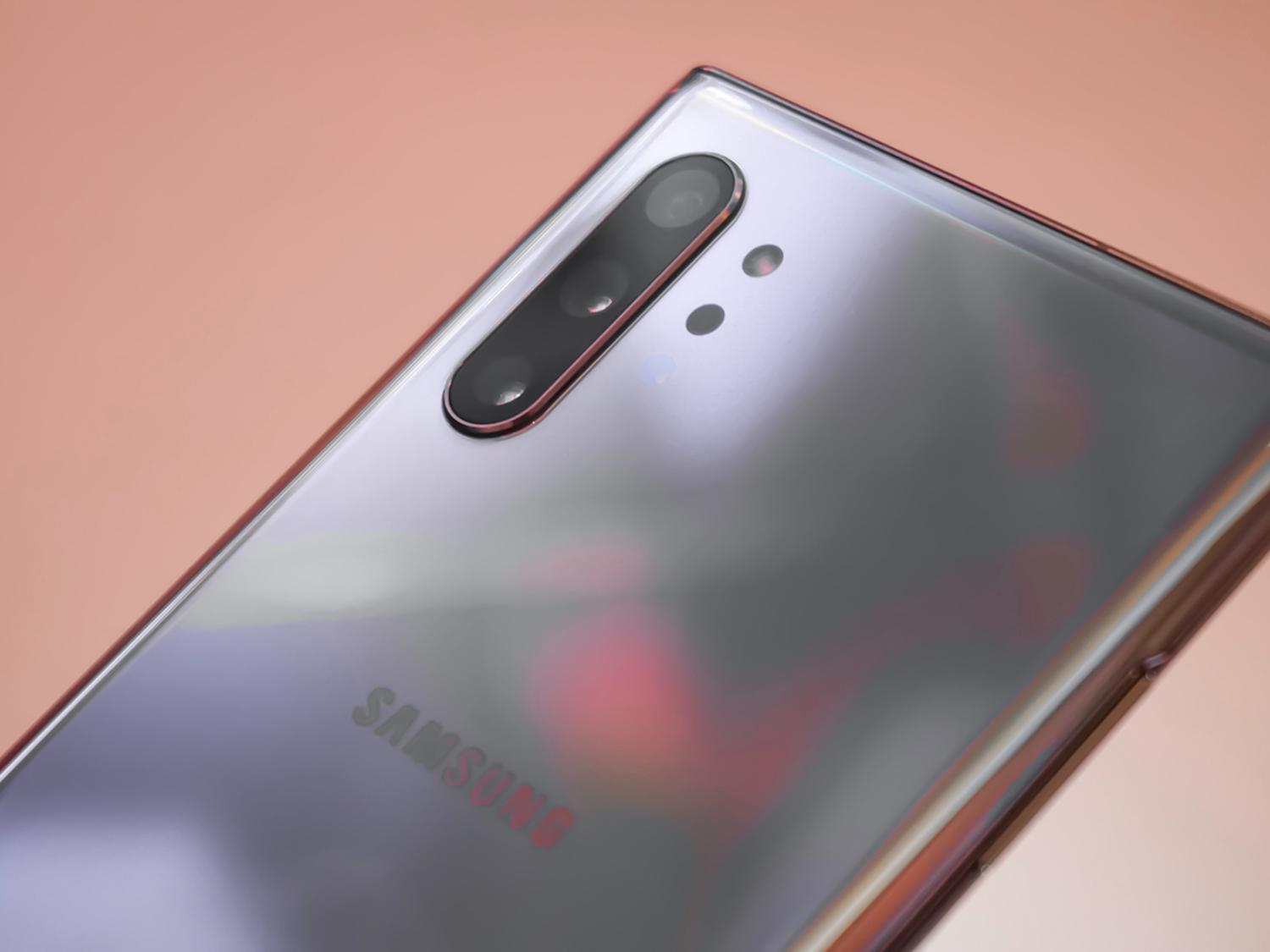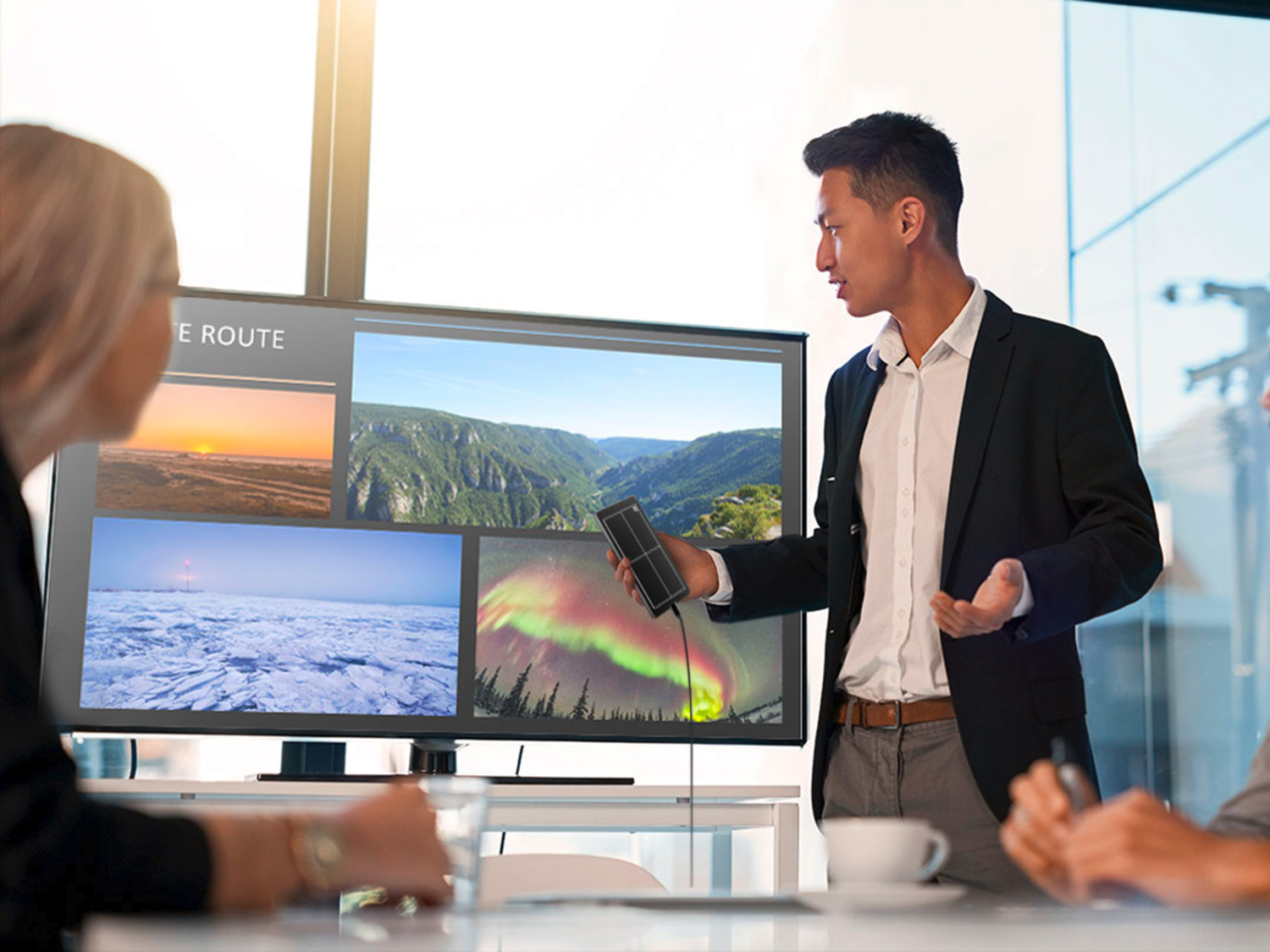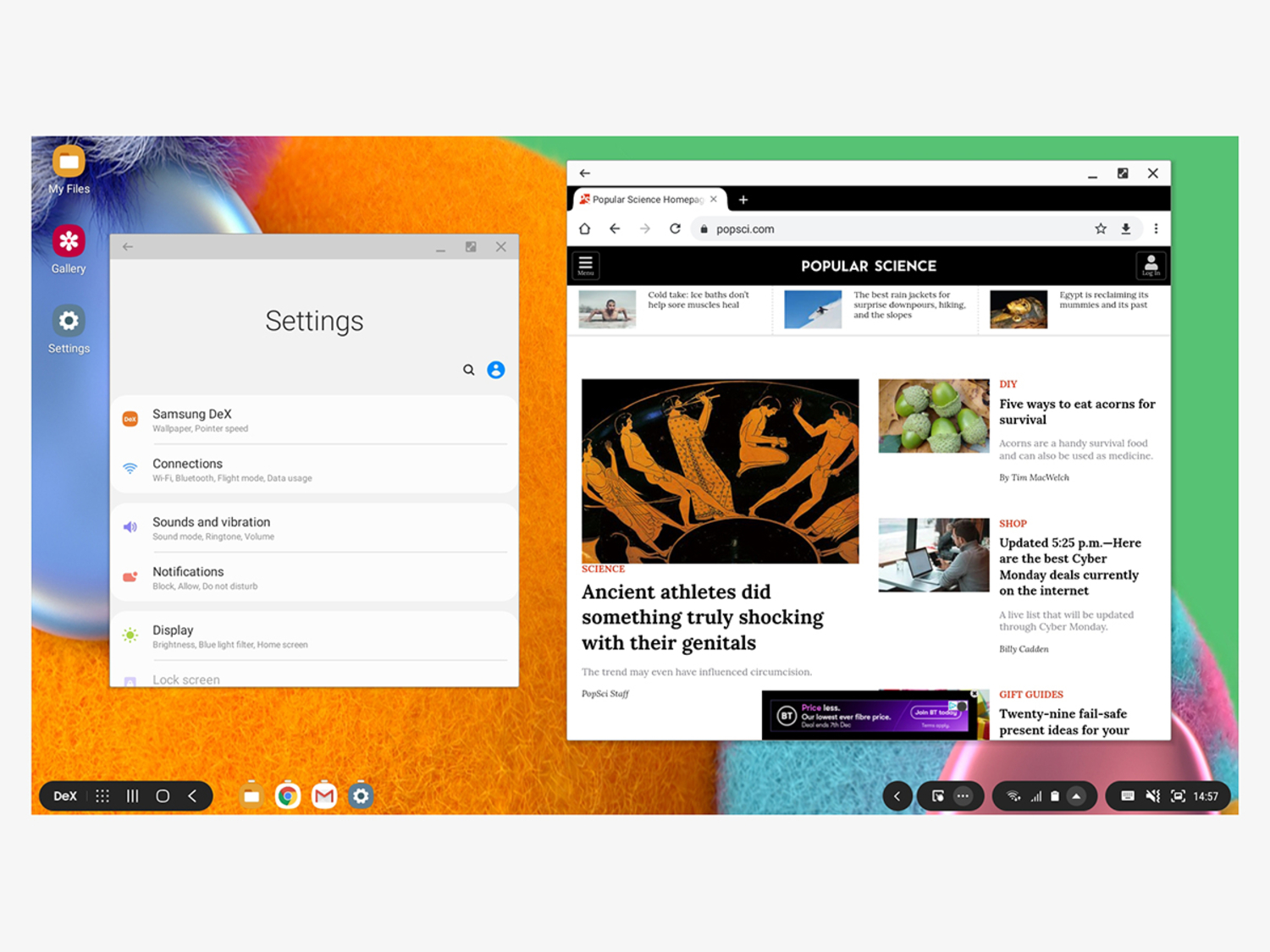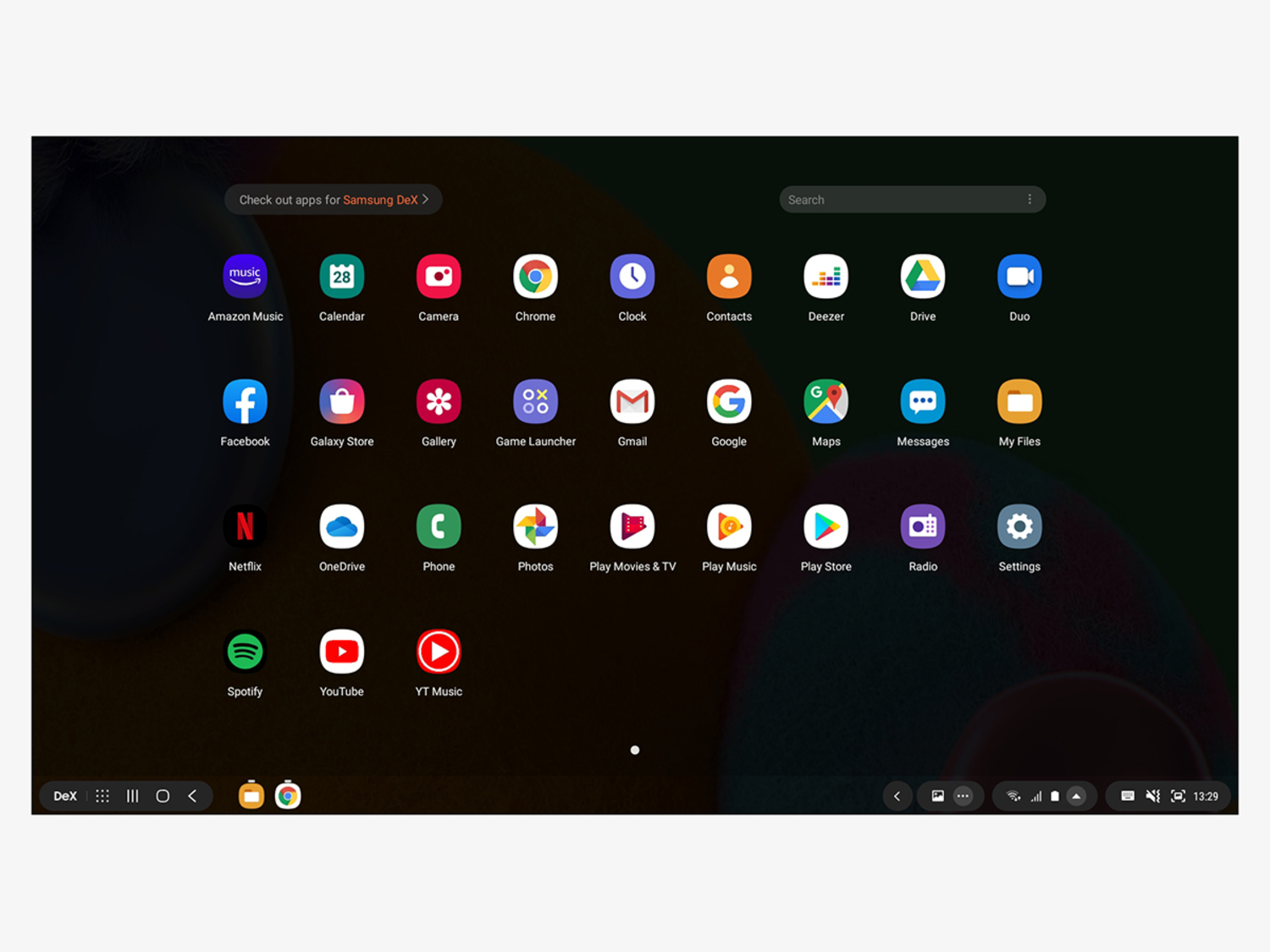

If you own one of the higher-end Samsung Galaxy phones or tablets, you’ve also got access to Samsung DeX. This feature essentially lets you use your phone to drive a second, larger display, and since it also works with a keyboard and mouse, you’ll get a PC-like experience with just your Galaxy phone.
Of course, it’s not a complete PC experience—you’ll still use mobile apps for tools such as Microsoft Word and Spotify, but you’ll be able to comfortably run them at once in separate windows.
DeX currently works with the Galaxy Tab S4, S5e, and S6 tablets; as well as the Galaxy S8, S9, S10, Note 8, Note 9, Note 10, and A90 phones.
Hardware connections

In the past, you needed a dedicated dock to sit between your phone and your big screen—something like the $53 DeX Docking Station, or the $90 DeX Pad. The good news is that you don’t need these anymore: the Note 9 and later versions all run DeX’s latest iteration, which only requires an adapter to bridge the gap between your device’s USB-C port and the HDMI connection on your monitor.
You can forgo the older, pricier DeX accessories, though they will come in handy if you need extra USB ports to attach a mouse and keyboard. If you don’t want to invest in a DeX hub, you can use any powered USB hub with an HDMI and peripheral connections. This Anker one will do the trick and it’s available on Amazon for $40.
Another option is to connect a mouse and keyboard to your Samsung phone via Bluetooth, as long as the devices support the wireless protocol. From Settings, tap Connections, then Bluetooth to pair (check the instructions that came with your mouse or keyboard for details, though it shouldn’t be difficult to do).
Perhaps the easiest and most direct way to get started if you have a Note 9 or newer is with Samsung’s official $40 DeX Cable: one end plugs into your phone, the other plugs into your monitor, and you’re ready to go. If you’re on older hardware, you’ll still need a dock or a pad.
Note that with any of these methods, the USB-C port on your phone or tablet will be full, so it’s a good idea to have your device fully charged before you start DeX. If you own a wireless charger, though, you can forget about this problem, since it’ll still work while DeX is running.
Once you plug your device into the bigger display, DeX will launch automatically—you won’t even need to flick a toggle switch. Slide down the notification panel on your Samsung phone or tablet and you should see an alert about DeX, as well as the option to use your phone as a touchpad—which you’ll probably want to do if you haven’t hooked up a mouse. You’ll be able to carry on using your phone as normal, even while DeX is powering the larger screen, so you’ll be able to take calls or respond to messages without interrupting your work.
DeX will also work if you plug your phone straight into a Windows or Mac computer, too—you’ll just need a USB cable and the free DeX application installed on your laptop or desktop. It’s the same as connecting directly to a bigger monitor, but it runs in a window or full-screen mode alongside your normal Windows or macOS operating system.
Finding your way around

The DeX experience is based around current operating systems, so it won’t take you long to find your way around. The apps launcher is in the lower left-hand corner, and you’ll likely recognize the familiar Recents, Home, and Back buttons from using Android on your Samsung phone.
Apps launch in windows, so you can run them alongside each other or make them full screen (with the button in the top right corner). To move a window, tap—or click—and hold on its title bar, then drag. Icons for open apps are pinned to the bottom, as on Windows and macOS. Most Android apps work just fine with DeX, though you might notice one or two inconsistencies, such as apps not fully adapting to the larger display.
Further along the bottom you’ll see notifications and quick settings (for enabling Do Not Disturb and other traditional mobile features). Click the up arrow by the battery indicator, then the cog icon, then Samsung DeX to get to the main suite of DeX settings. From here you’ll be able to adjust the mouse pointer speed, the wallpaper for the DeX view, the resolution of the display you’re connected to, and more.

You can also use DeX to simply mirror your phone screen on the bigger display. This will appear as an option in your phone’s notification tray, and you can switch back using the same toggle switch. When you’re done, simply disconnect the HDMI cable, and your phone will return to normal.
If you’re wondering why you’d want to use a feature like DeX, think about how easy it’ll makes showing games, movies, photos, or presentations from your phone. They’ll look much better up on the big screen, and it will certainly be more comfortable if you’re trying to show something to more than two other people.
Also, you’ll be connecting your mobile device to a monitor through a cable, avoiding the hassle of Wi-Fi passwords, Bluetooth pairing, or figuring out yet another screen-sharing technology.
Then there’s that keyboard and mouse support. If you’ve got a ton of writing or emailing to get through, DeX can be really useful in helping you get it done, even if you don’t have your computer on hand. All you’ll need is a USB-C-to-HDMI cable and a compatible television or monitor, and you’ll be ready to work.
